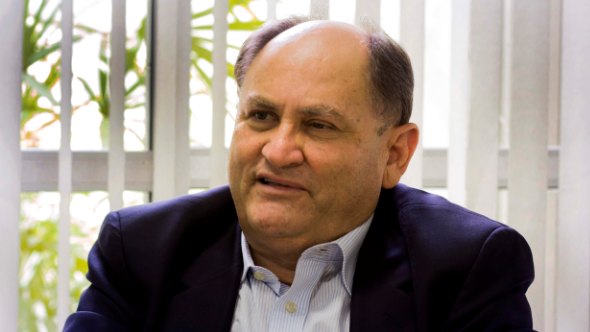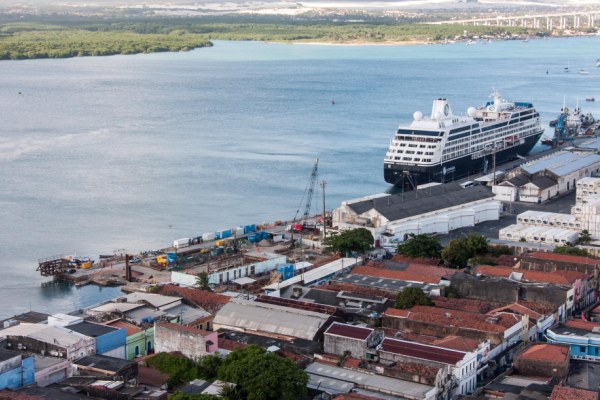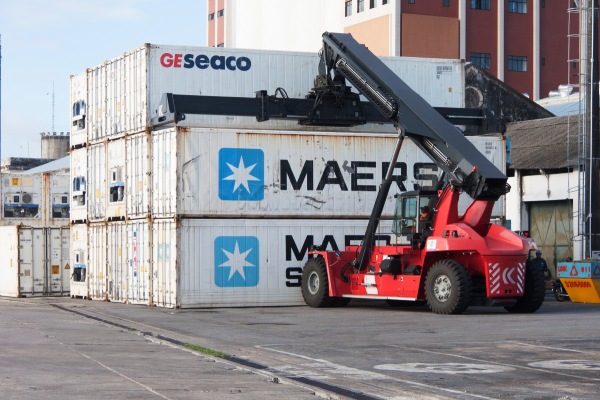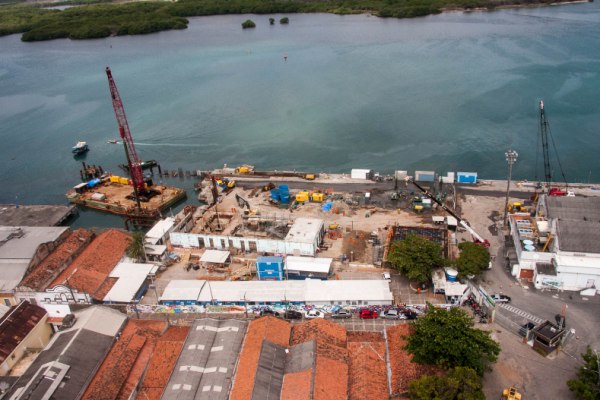CODERN: Port of Natal and Areia Branca’s Salt Offshore Terminal
CODERN is the Dock Company of Rio Grande do Norte. Its Director talks about the role of CODERN and presents the characteristics of the salt terminal in Areia Branca and the port of Natal. He also mentions some upcoming projects, such as the construction of a passengers terminal.
Interview with Pedro Terceiro de Melo, Director of CODERN (Dock Company of Rio Grande do Norte)

Could you present CODERN (Dock Company of Rio Grande do Norte) and the role it plays?
In the short run, we expect to contribute to the rehabilitation of the neighborhood in which we are present. Natal has grown and turned its back on this ancient neighborhood and on the river. With the construction of the passenger terminal we will certainly help to revitalize this area.
CODERN has just turned 80 years old and it manages Natal, Areia Branca and Maceió harbors. We have circa 250 employees: 100 in the Natal headquarters, approximately 100 in Areia Branca and 60 in Maceió. In Areia Branca, we have the employees divided in groups, because we have the Porto Ilha (Island Harbor), which is located 14 miles away from the coast and it’s the only offshore harbor in the world. In the island harbor we transport salt which is of enormous importance to our states’ economy – it represents almost 90% of the salt produced in Brazil and the percentage passing through the island harbor is of 40%.
The Natal harbor mainly deals with the fruit exports which are also very important to our economy. We know we need to work on the Natal harbor in terms of its capacity for tourism, due to its location and also due to its size.
It is by a presidential decision that we manage the Maceió harbor, although we know there’s a certain geographical distance. The main product going through this harbor is the sugar production, one of the biggest potentials of the state of Alagoas. The manager is currently appointed through us in Natal, but we feel that Maceió must become independent in the short run.
Giving more emphasis to the two units of Rio Grande do Norte, what are the major characteristics of the salt offshore terminal and of the Natal harbor?
The most important characteristic of the salt terminal is the fact that it’s an offshore harbor. It’s an island of 10,000 m2 that was created in 1974 and its single purpose is to transport the salt produced in the state. Last year we made 240 million Brazilian reals, so we were able to double the area and also to double our capacity to receive and load the salt into vessels. We also doubled our storage area and, of course, the capacity of the vessels: before the investment we were only able to load vessels up to 25,000 tons and now we can load up to 50,000 tons. Areia Branca is unique in its characteristics in the whole world.

As far as the Natal harbor is concerned, it’s characterized by the transport of fruits. I think that our state is the biggest melon producer in the world and most of the production goes to Europe. Besides the fruit transport, we are also capable of working in the tourism area. The city of Natal is very opened to tourism and, with the conclusion of the construction work of the passenger terminal, we have no doubt that we are going to give a tremendous boost to the state tourism. The sun shines here throughout the whole year, we have wonderful beaches and we are geographically closer to the neighbor continents and we have a strong internal tourism. All these characteristics and also the fantastic hotel network we have make us invest in tourism in Rio Grande do Norte.
Is the passenger terminal being built or is it just a project?
55% of the construction is already done. We have a schedule where it is stated that the construction work must be finished in September. We are already working with the Receita Federal (Federal Revenue), the Polícia Federal (Federal Police), the Ministry of Agriculture, so that, when the construction is ready, we can make its functioning feasible. It will have an area of 5,500 m2 in which we can accommodate 3,000 passengers simultaneously.
Which are the strong points of the Natal harbor compared to the region and to other national harbors?
Its major strength is its vocation for tourism due to what Natal already represents for the national and international tourism. I’m absolutely sure that the investment that is being made at the moment will favor the harbor enormously.
Rio Grande do Norte is a huge fruit producer and exporter and one of the things that differs us is exactly the transportation of fruits – we are close to the export destinations, we have a cold room that was installed 5 years ago with storage capacity to make the logistic easier.
What are the biggest future projects for the harbor?

The biggest projects in the near future will be the passenger terminal that will be concluded this year, and the expansion of the No. 4 Loading Berth, that is a construction that will be open for bidding during the next month and it will comprise the 40% expansion of the pier. This expansion will increase our storage capacity for containers and it will also improve our logistics as a whole.
A more ambitious project is linked to the Rio Grande do Norte mining potential. We already visited some of the probable mining explorers and the state is very interested in the construction of another harbor just to export the state’s ore. This is a project we are working on together with the Federation of Industries (FIERN) and the Federation of Commerce (Fecomércio) in terms of location.
Which are CODERN’s biggest challenges?
With CEP’s support, we hired the Santa Catarina SENAI and a management plan is already being implemented, so that we can improve in terms of efficiency, logistic and in terms of the way we run the company.
We want to change our way of thinking and acting to make CODERN an efficient company that has a logistic so good and advanced that it can attract exporters and importers to use our equipment.
The investment in infrastructures is also important – the passenger terminal, the expansion of the loading berth – it’s part of our challenges.
One big challenge is also the feasibility of the ore harbor because we understand that it will be of huge importance to the state’s economy.
Are there any opportunities for foreign investors?

There is a huge opportunity in the new harbor because Rio Grande do Norte has the raw material potential.
When do you think the harbor project will be completed?
The implementation of the harbor project can last from 6 to 10 years. We still don’t have a schedule for its construction, but we are working on the project.
What would be the results you would like to achieve in 2 to 3 years? What would be your dream in the long run?
In the short run, we expect to contribute to the rehabilitation of the neighborhood in which we are present. Natal has grown and turned its back on this ancient neighborhood and on the river. With the construction of the passenger terminal we will certainly help to revitalize this area.
In the long run, we hope to make all Federations and governments to understand that the Rio Grande do Norte economy needs a new harbor.
Why should a foreign investor come to Rio Grande do Norte and not to another Brazilian state?
First of all, because the sun shines in Rio Grande do Norte 360 days in a year.
I can also mention that we have large areas of productive land which were proven to be (through a study) one of the most productive lands in the world. The investors should come and see these areas.
We also have a huge mining potential that can be explored and transformed into richness, welfare and wellbeing of the nation.
We are going to be present for the first time in Intermodal (International Fair for Logistics, Cargo Transport and Foreign Trade) which is a fair that is going to be held in São Paulo. CODERN is going to be present as an exhibitor and we are going to start publicizing our passenger terminal and all our potential.